Shiori Yoshimiya, president of MATCHA KAORI JAPAN.
The new tea season has arrived.
Did you know that tea, one of Japan’s unique food cultures, is currently finding a way to be exported overseas? While the amount of green tea purchased per household has declined by about 20% over the past decade, overseas exports of green tea, including matcha, have more than doubled over the past decade.
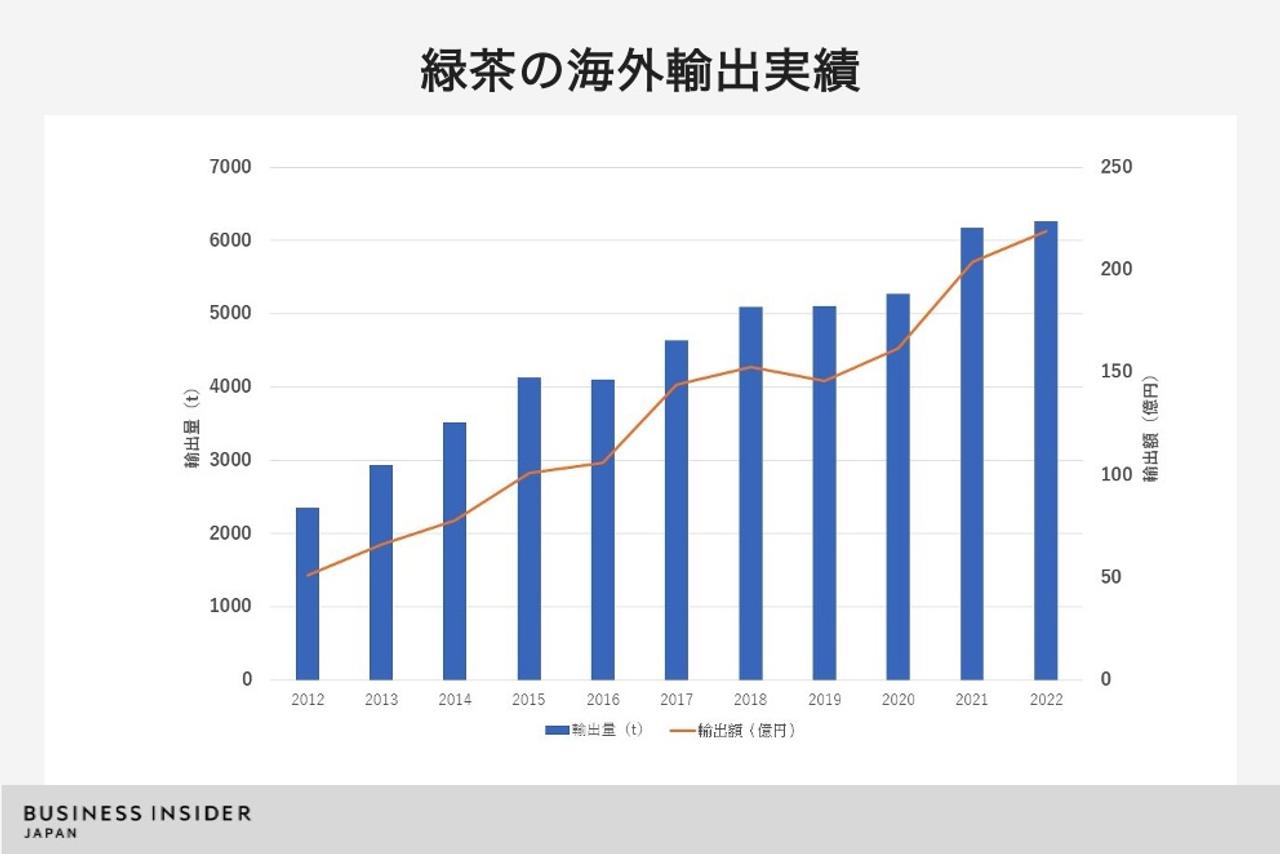
Japanese tea exports are growing steadily in terms of value and volume.
Under such circumstances, in fact, it is hardly known that one woman, a former expat wife, opened up a sales channel in two South American countries, Mexico and Peru, almost all by herself.
The name of the company is MATCHA KAORI JAPAN (Hamamatsu City, Shizuoka Prefecture). Representative Shiori Yoshimiya (49) started the business with a local mother friend as a founding partner, and also buys domestic raw materials at “more than 20% higher price than the market price” and returns profits to farmers, even though it is a small household. We are sending tea to the world with a business view.
We asked Mr. Yoshimiya about his unique “business created by a resident wife.”
The founding partner is a “Mexico mom friend”
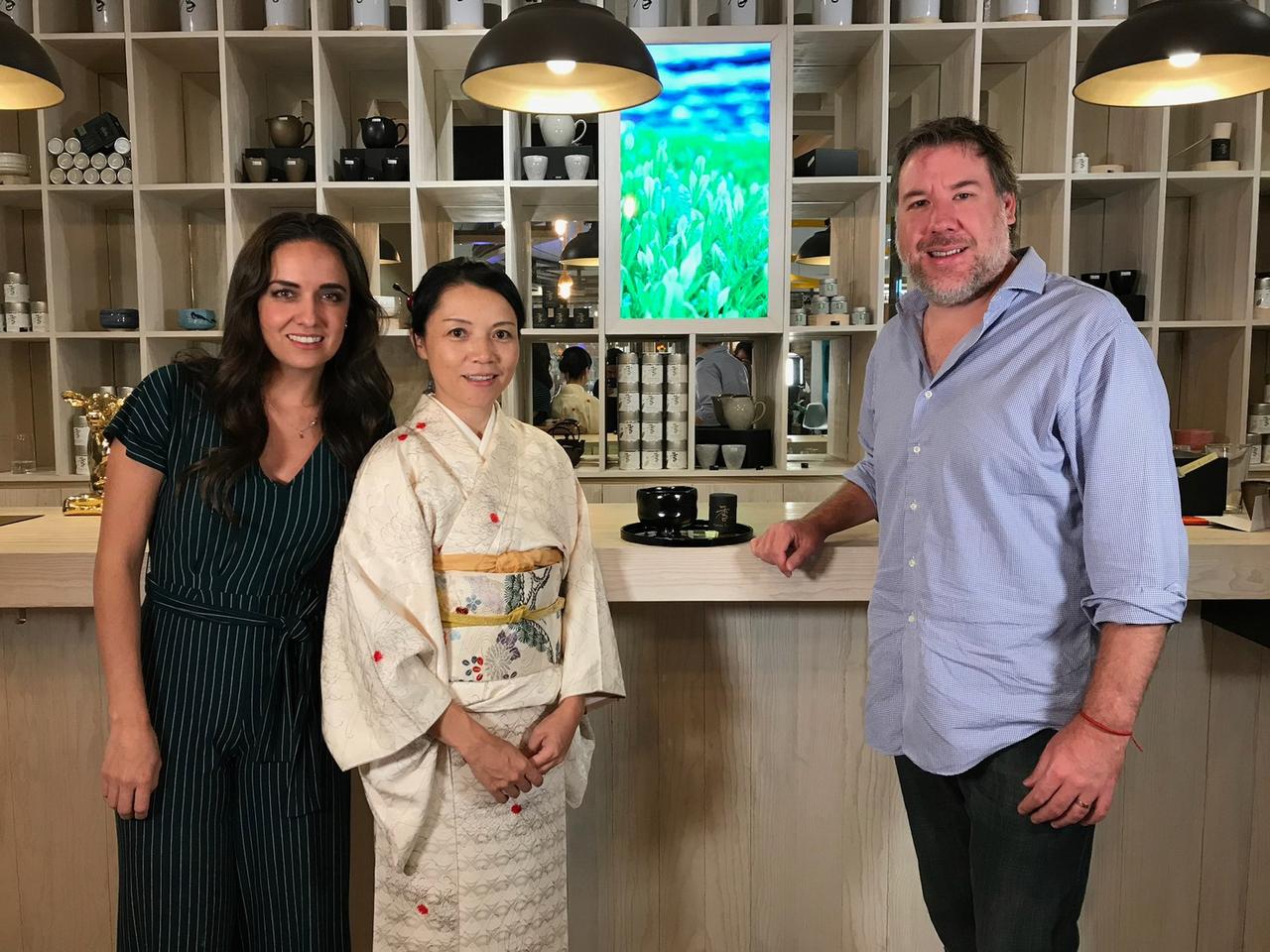
Mr. Yoshimiya (center), his founding partner friend (left), and her husband.
“The matcha cookies my friend gave me were delicious, so I asked about the recipe and tried making one myself. I was deeply moved.”
Mr. Yoshimiya looks back on the reason why he decided to start exporting tea. It was in 2013 when she was living with her husband in Mexico while raising children.
“The mother friend said to me, ‘I really like this (matcha). Tell me more about tea. I had it, and I failed because I wasn’t making any money, but when I was in my 20s, I was selling tea at events all over the country.
Yoshimiya was scheduled to return to Japan within a year, with only a short period of time remaining in Japan. I brought this up to her mom friend.
“I’m going back to Japan soon, so when I get back, I can export Japanese tea. Why don’t we import it and spread it in Mexico?”
At that time, she was a full-time housewife raising a young child. Her husband, a business owner, feared the future of her business.
“She (who later became a founding partner) thought that her husband’s map-making business was going through a difficult time, and she wanted to do something to help,” says Yoshimiya.
We agreed and decided to start an export business together. Mr. Yoshimiya’s role is to “export” the products from Japan and “sell” them locally. She participated in flea markets and school bazaars in Mexico in order to verify whether tea was really good for her products. She arranged tea with Japanese plastic models and furoshiki to see how they reacted, and became convinced that green tea and matcha could sell well in Mexico.
Advertisements
Dominated the Mexican market for two years
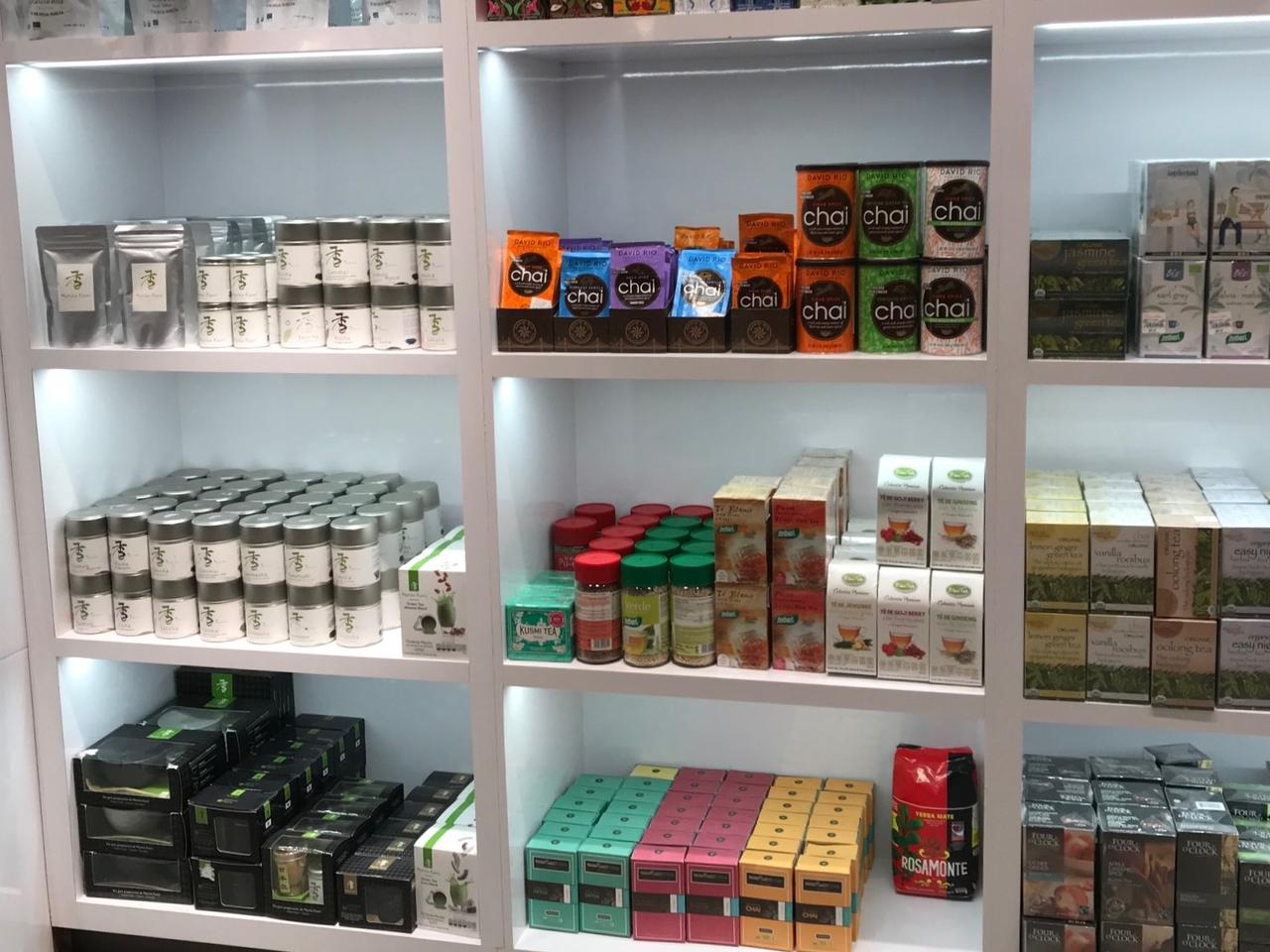
Products lined up in a Mexican supermarket (left row).
When we started exporting tea to Mexico in 2014,100% market share for 2 consecutive years(*According to comparison between trade statistics and matchakaori figures).At that time, the popularity of tea in the United States was increasing, with “Oi Ocha” becoming popular in Silicon Valley, but neighboring MexicoTruly undeveloped landwas.
Sales have grown steadily every year, doubling from 20 million yen in 2017 to 40 million yen in 2018.Although the dominant era did not last long due to the entry of other companies, 2023 will also be the highest tie ever40 million yenanticipate sales of A Mexican friend who was a founding partner still serves as the representative of the local subsidiary. Her husband (whose predictions proved correct and the business subsequently went bankrupt) has also joined as her partner.
“Other countries should be able to do the same.”
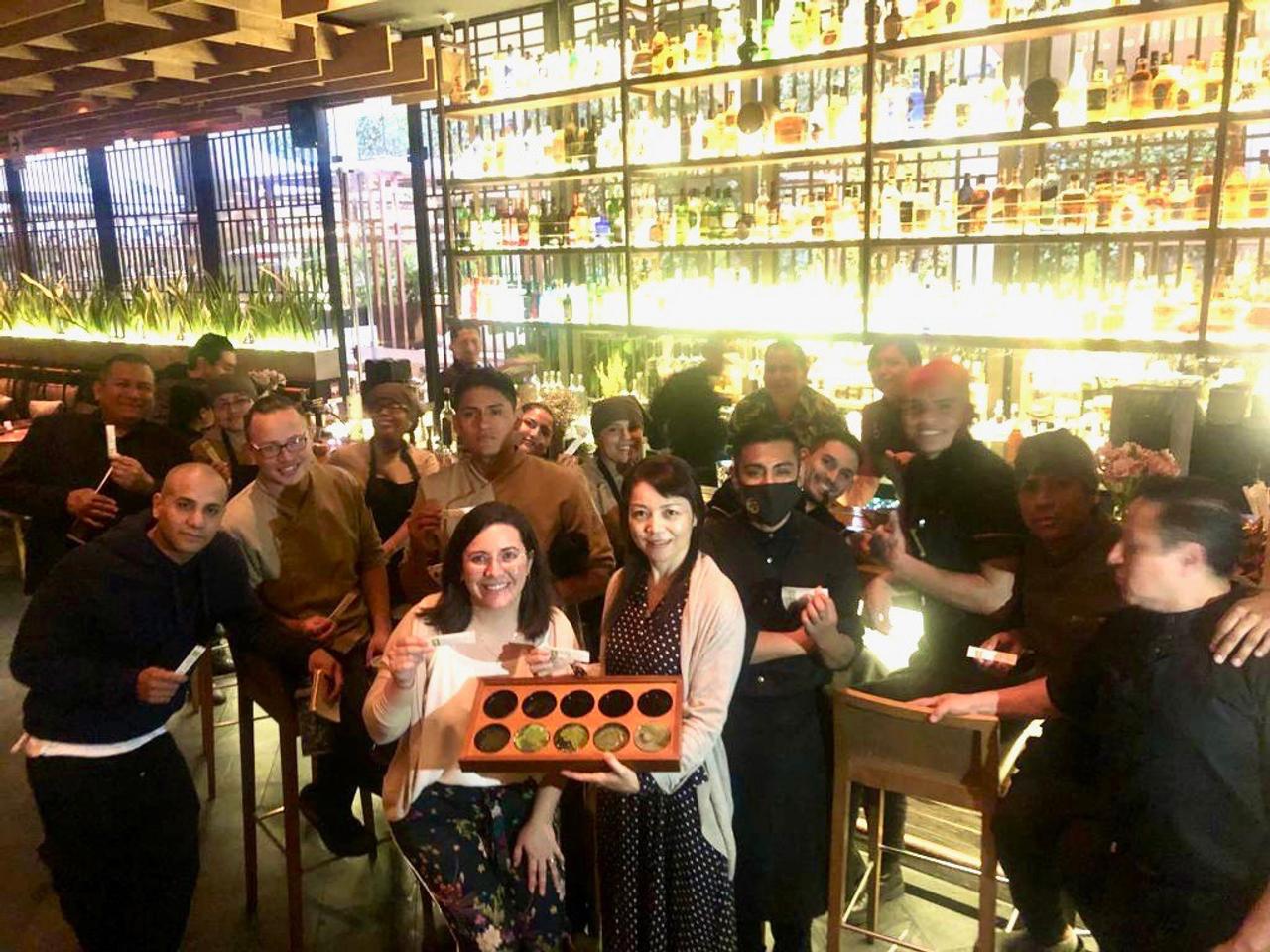
In Lima, Peru, Mr. Yoshimiya gave a seminar to introduce Japanese tea.
Next, Mr. Yoshimiya set his sights on Peru, which is also in South America.
“If even one person could secure this much market share, I thought that other South American countries could do the same. Peru is only a quarter of the market compared to Mexico, but the Japanese tea market is quite large. We haven’t had any significant export results yet, so I felt that there was an opportunity.”
Participate in JETRO’s individual business meetings to create connections with South American buyers, and in 2021, receive an order from a local supermarket in Peru. We managed to export five types of tea, including matcha powder and sencha tea bags. The export share in 2021 will also be the same as in Mexico100%was.
According to statistics, green tea exports to Peru in 2021 will be about 1.2 tons. Mr. Yoshimiya handled all of this.
What you should pay attention to is the unit price per kilogram.Approximately 16,000 yen, five times the overall average for exported tea (approximately 3,300 yen)close.
“The main reason is that we can determine the market price here because there is no comparison target.Retail prices are cheaper in Peru than in the USThat’s right. We are able to offer our products at a price that is acceptable to consumers because we do direct transactions through our own sales channel without the involvement of a trading company.”
Profitability is not disclosed, but
“It’s a good figure for a wholesaler, and it’s said that the profit margin is on par with a retail business. I’m doing everything by myself while collaborating with external partners, so I don’t have to pay labor costs.”
In April 2023, it was decided to continue ordering the two products exported to local supermarkets. The Peru business is aiming for sales of 10 million yen this year.
buy high, sell high
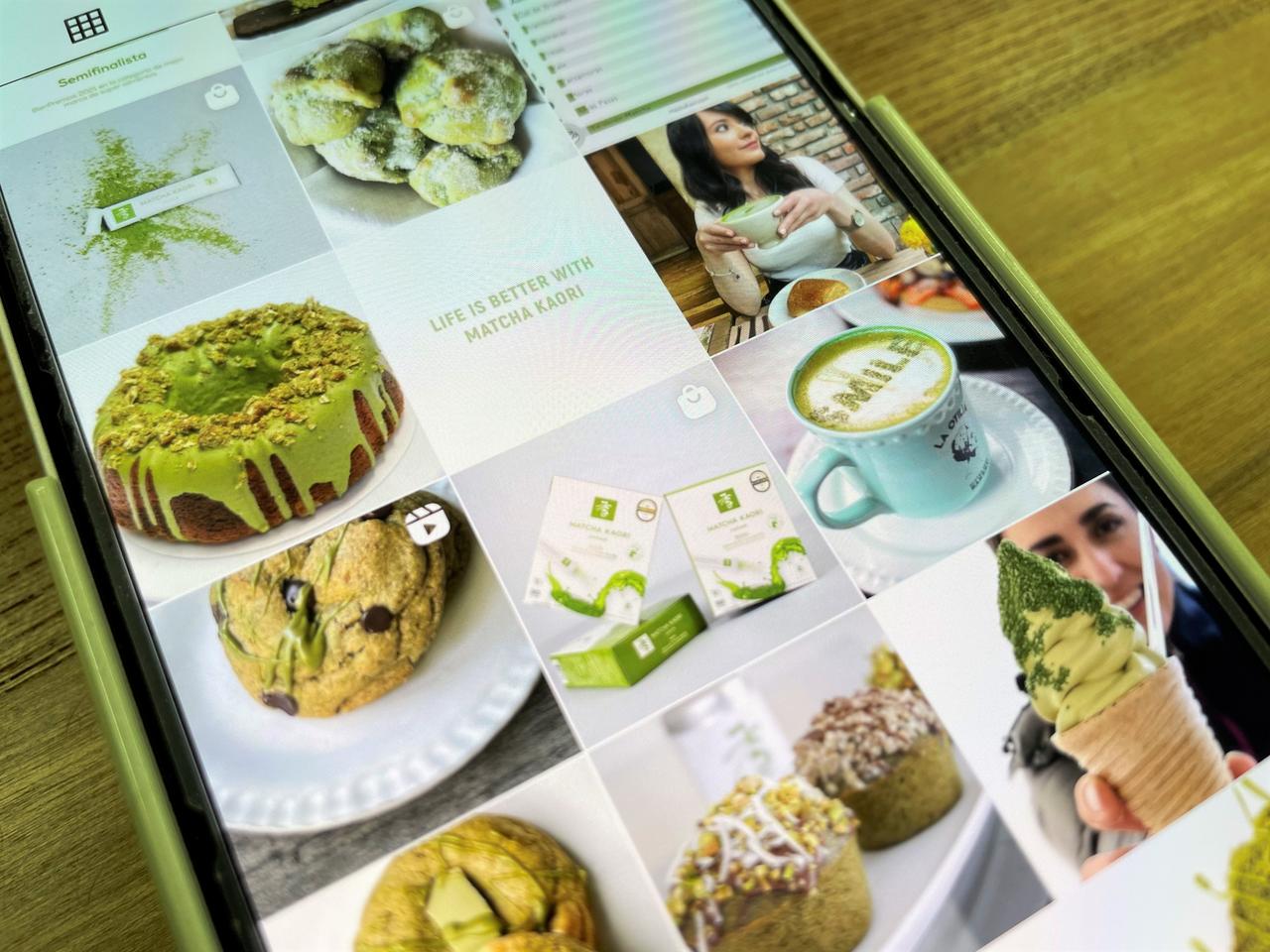
Instagram of Matcha Kaori. Disseminate matcha as a healthy and fashionable food. About 47,000 followers.
Taking a good profit isTo procure at a high price from producersBut also.
The situation facing tea farmers is severe. According to statistics from the National Federation of Tea Producers Associations, the average unit price of unrefined tea in 2012 was 1,332 yen per kilogram. In 2021, it is down to 1014 yen.Although there are some ups and downs depending on the year, the sluggish trend has been trending for many yearsis. While it is difficult to say that tea farmers are a “profitable business,” the number of farmers and the area under cultivation are declining.
According to data from the Ministry of Agriculture, Forestry and Fisheries, the unit price in Japan is 1,291 yen per kg for sencha, and 2,599 yen for tencha, the raw material for matcha (2021). On the other hand, export tea is 1kg 3495 yen(in 2022),Nearly three times that of domestic senchatraded at a price. Matchakaori Japan, as an exporter that can expect a high market price, is working to return profits to tea farmers in cooperation with business partners.
“We have our tea merchants make efforts to buy tea leaves from production areas at a higher price than the market price.20% or moreSometimes I buy expensive. Naturally, we buy commercialized tea at a higher price than the market. I think we can do this because we are a small company.”
talk to.
Because we are nobody, we do not rely on our peers
The point of Mr. Yoshimiya’s business is “independent development.” He did not follow the “common methods” of exporting, did not belong to a company, and used the language skills and friendships he had acquired while living overseas to open up sales channels.
“I have a decent amount of language skills and a decent amount of local knowledge.What is it? If I had become a member of some company, I think I would have been at the level of “You don’t have much knowledge, but you’re doing your best”. By starting on my own, I was able to create a unique sales channel.”
It says.
“There is also the method of getting introduced to Japanese supermarkets and Japanese restaurants and selling products to them.The difficulty level is low, but I couldn’t make the achievements I have now.In Mexico, we cooperated with local friends, and in Peru, we were able to develop sales channels for local supermarkets instead of the Nikkei community, which led to large orders.
I was able to make all the decisions and judgments on the spot, so the sense of speed was completely different.”
Mr. Yoshimiya, who has expanded the export of Japanese tea in cooperation with many business partners such as producers, processors, and local managers, has forbidden himself.
“When something unknown happens,I didn’t just ask my colleagues to teach me.Because you can’t be better than that person. As I did my own research and asked JETRO and government officials, I was able to obtain information that my peers did not know.”
When asked about his thoughts on his career, he said, “I’m not aiming for anyone in particular,” but mentioned “Kei Oura” as someone he admires. She was a female merchant who made a fortune in the green tea trade from the end of the Edo period to the Meiji period.
“I think it’s cool, but I’m not trying to imitate him. Rather than failing, I want to work on my life-size self.”
Source: BusinessInsider
Emma Warren is a well-known author and market analyst who writes for 24 news breaker. She is an expert in her field and her articles provide readers with insightful and informative analysis on the latest market trends and developments. With a keen understanding of the economy and a talent for explaining complex issues in an easy-to-understand manner, Emma’s writing is a must-read for anyone interested in staying up-to-date on the latest market news.
